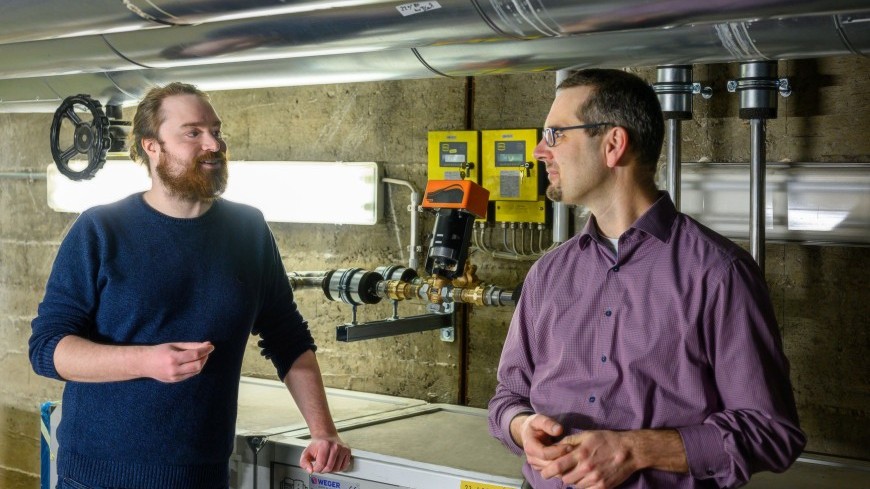Monitoring in real time
etit scientist Mario Beykirch explains energy consumption prediction model
2023/04/24 by Michaela Hütig
Saving energy at the TU Darmstadt is working: Consumption in the past months was significantly lower than in the previous year. How TU researchers use the collected data.

Mr Beykirch, together with Professor Florian Steinke's team you have developed an innovative prediction model for TU Darmstadt's energy demand. How does the calculation with this model work exactly?
Due to the energy crisis, some energy-saving measures were implemented at the TU Darmstadt, and we wanted to evaluate their effect, without the influence of the weather. For this purpose, we developed a regression model that predicts the expected consumption without these energy-saving measures. To do this, we trained the model only with the data from the last two winters, i.e. from the time before these measures were implemented. The results of the forecast are then compared with the measured data to calculate the savings independent of weather conditions.
The model is so flexible that we can also apply it to individual buildings. Through the real-time energy monitoring that we set up in the research project, we were able to implement this evaluation for almost all of the TU's buildings. This means that those responsible for energy in the buildings can already view this evaluation the following day via a web platform.
What factors are taken into account in the calculation?
The outdoor temperature, the average outdoor temperatures of the last three and 14 days, the solar radiation and the daily maximum of the sun's position are taken into account. In addition, a distinction is made between days off and working days.
The consumption data of the TU are not only processed by the EnEff-Campus project, but also scientifically evaluated. In what way and under what questions is this analysis carried out?
In the research project, the data and the forecasts are used, among other things, to create the basis for automated control of the energy system. In addition, the data will be used to investigate low-temperature heating systems and efficiency improvements in the heating network and to develop a mathematically optimised energy system design for the Lichtwiese campus from 2030.
Do you already have the first results?
We were able to show that the TU Darmstadt has saved about 22 per cent of the heating energy this winter compared to previous winters up to now (as of the beginning of February).
Will the model probably also be used in the coming winter of 2023/24? Are further applications conceivable?
The model can also be used next winter. Especially the evaluation at building level offers many possibilities to achieve further energy savings. For example, unusually high consumption in individual buildings can be quickly identified and the causes directly remedied.
The questions were asked by Michaela Hütig.
Always up-to-date with exciting news from the etit campus: Follow us on Instagram!
Recommended external content
We have selected external content from Instagram for you and would like to show it to you right here. To do this, you must reveal it with one click. You can hide the external content at any time with another click.
I agree to external content from X being shown to me. This may result in personal data being transmitted to third-party platforms. You can find more information in our Privacy Policy.



